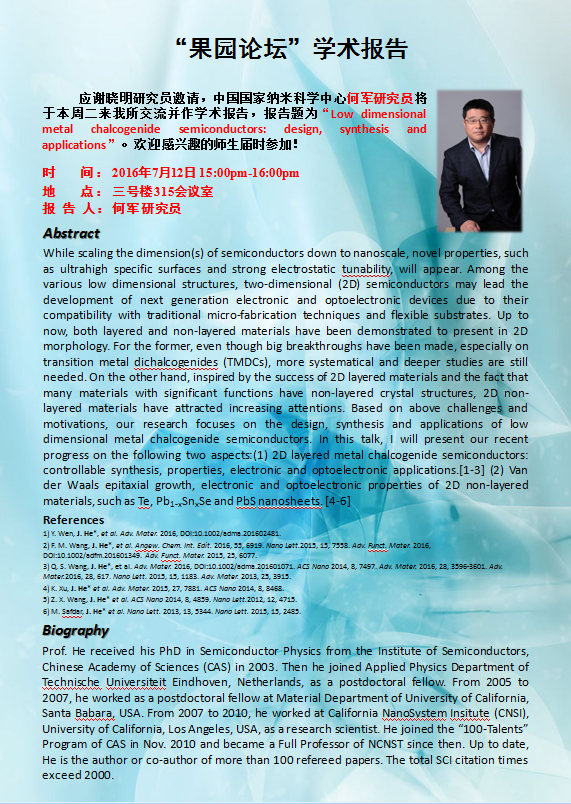Low dimensional metal chalcogenide semiconductors: design, synthesis and applications
While scaling the dimension(s) of semiconductors down to nanoscale, novel properties, such as ultrahigh specific surfaces and strong electrostatic tunability, will appear. Among the various low dimensional structures, two-dimensional (2D) semiconductors may lead the development of next generation electronic and optoelectronic devices due to their compatibility with traditional micro-fabrication techniques and flexible substrates. Up to now, both layered and non-layered materials have been demonstrated to present in 2D morphology. For the former, even though big breakthroughs have been made, especially on transition metal dichalcogenides (TMDCs), more systematical and deeper studies are still needed. On the other hand, inspired by the success of 2D layered materials and the fact that many materials with significant functions have non-layered crystal structures, 2D non-layered materials have attracted increasing attentions. Based on above challenges and motivations, our research focuses on the design, synthesis and applications of low dimensional metal chalcogenide semiconductors. In this talk, I will present our recent progress on the following two aspects:(1) 2D layered metal chalcogenide semiconductors: controllable synthesis, properties, electronic and optoelectronic applications.[1-3] (2) Van der Waals epitaxial growth, electronic and optoelectronic properties of 2D non-layered materials, such as Te, Pb1-xSnxSe and PbS nanosheets. [4-6]

